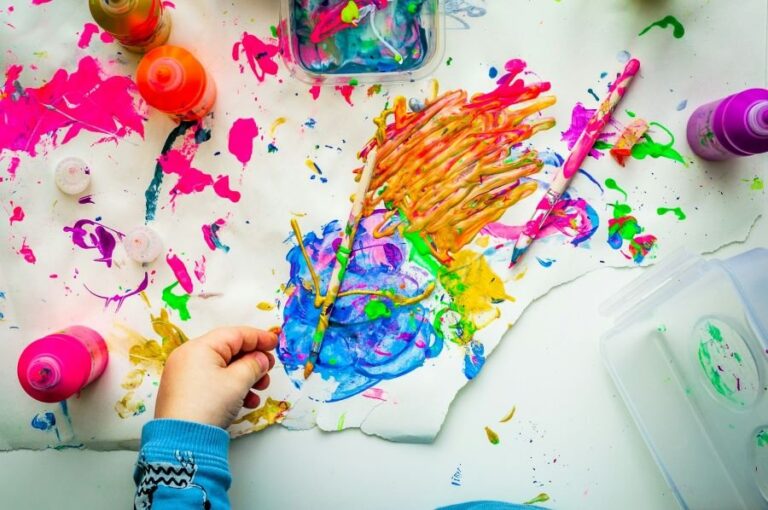Key Takeaways
-
Arts and crafts are integral to occupational therapy for developing various skills in children.
-
Creative activities in occupational therapy can improve motor skills, cognition, and emotional health.
-
These activities can be adapted for therapy at home to maintain progress and encourage practice.
The Role of Arts and Crafts in Occupational Therapy
Arts and crafts are integral components used by occupational therapists to aid in the development of various skills in their clients. These activities address specific therapeutic goals, enhancing motor and social capacities while bolstering mental well-being.
Enhancing Motor Skills
Arts and crafts activities such as painting, drawing, and crafting are excellent tools for improving motor skills. Occupational therapists utilize these activities to help children refine their fine motor skills and coordination. For example, threading beads onto a string enhances hand-eye coordination, while manipulating clay can strengthen a child’s grip and dexterity.
Fostering Creativity and Mental Health
The creative process inherent in arts and crafts provides a unique way for children to express their emotions and cultivate mindfulness. Aspects of art therapy integrated into occupational therapy can encourage self-expression and offer a non-verbal mode of conveying thoughts and feelings. This creative expression can significantly contribute to a child’s mental health, serving as a therapeutic outlet and a way to process experiences.
Building Confidence and Social Skills
Engaging in arts and crafts can build a child’s self-confidence and foster the development of communication and language skills. Occupational therapists often introduce group projects in community settings to promote socialization and the development of friendships. For children with a disability, these activities offer a sense of belonging and accomplishment, enhancing their ability to interact confidently within their community.
Practical Applications and Evidence
In occupational therapy, arts and crafts activities serve as a vital tool, enhancing numerous developmental skills among children. These modalities are supported by practical applications and backed by research, reflecting both the therapeutic impact and creative engagement they foster.
Activity Examples
-
Crafts for Kids: Activities like coloring and bracelet-making improve fine motor skills and hand-eye coordination. Coloring tasks, for instance, assist in developing grip and control, necessary for handwriting.
-
Music and Movement: Incorporating music, theatre, and dance offers a multisensory experience, aiding in the development of auditory processing and gross motor skills. These activities promote community interaction and exercise.
-
Creative Writing: Engages problem-solving and communication skills, encouraging expressive language development through storytelling and reflection.
-
Early Intervention Activities: The use of simple crafts and games in early intervention can bolster memory retention and cognitive development, tailoring therapy to the need for illness-specific strategies.
Case Studies and Reflection
-
Reflective Practices: Occupational therapists often document improvements in children’s skills and exercise through artifacts created during therapy sessions. This evidence showcases individual progress and therapeutic outcomes.
-
Community-Inclusive Studies: Research reflects the significance of arts and crafts in creating a sense of community, where shared activities enhance social skills and group communication. It’s observed that these experiences are positively linked with memory enhancement.
-
Evidence in Illness-Specific Contexts: Studies illustrate that tailored arts and crafts activities assist in managing symptoms related to specific illnesses, providing evidence of efficacy in therapeutic applications.
-
Reflection and Growth: Case reflections reveal children’s growth by comparing initial abilities to post-intervention capabilities, offering concrete evidence of the benefits embedded in these creative outlets.
Arts and crafts are invaluable in occupational therapy, providing children with a multifaceted tool for development. Through creative expression and skill acquisition, these activities inherently support fine motor improvement, cognitive enhancement, and emotional regulation. They foster an environment where children with diverse therapeutic needs can flourish, expanding both their occupational capabilities and personal growth.



